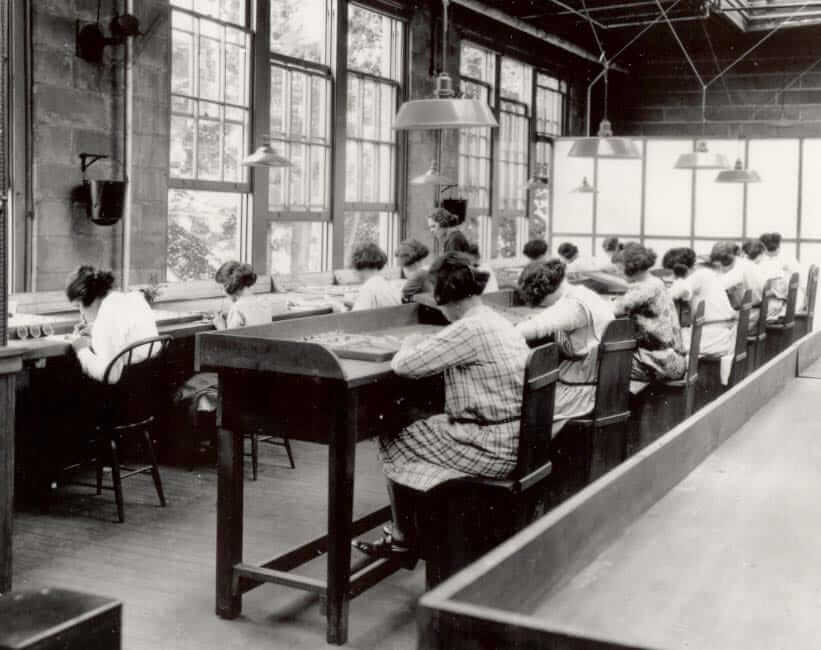Author: THE KERNEL & Kiersten Sundell
In 1902, the workplace standard for radiation was (a ridiculously high) 30,000 mSv/year. For reference, the current maximum allowable dose for nuclear plant workers to receive in a year is 50 mSv. Getting 30,000 mSv in a year is like getting 30,000 CT scans. It’s like being one of the firefighters who responded to Chernobyl at the time of the meltdown 37 times over. You get the point — there was nothing safe about workplace radiation standards during the industrial revolution, as the dangers of radium were not well known to the public. In one of the most famous cases, some watch-dial painters in World War One got incredibly ill by using glow-in-the-dark paint.
Why did the paint glow?
Well it contained radium, a radioactive element, and it was important for military watches that needed to be viewable at nighttime.
These child and teen workers, later called the “Radium Girls,” were instructed to lick their paintbrush tips to make a fine point for their handiwork, ingesting copious amounts of radium in the process. Over time, scientific evidence of radiation poisoning began to surface, causing executives in the factories to take protective measures for themselves, while still forcing these girls to ingest radium. Radium chemically mimics calcium in the body, and over time, the radium accumulated in their bones.
This was a historical instance where radiation seriously impacted vulnerable members of the public; giving them cancer, bone diseases, anemia, and other highly preventable health problems. But it’s important to understand the extent of the radiation exposure that caused these things, and avoid senseless nuclear fear.
A common public sentiment is that radiation causes cancer, it kills people, and it should be avoided at all costs. But the truth is that not all radiation is dangerous, and small amounts are actually very important. We get around 3mSv of background radiation per year just by living, and certain medical procedures, lifestyle choices, or occupations can add to this number. If you live within 50 miles of a nuclear plant, for example, you’ll receive about 0.003% more radiation than the average person every year. Recent studies from SnoLab, a world-renowned Canadian research facility, even suggest that humans would get sick if we didn’t have these minimal exposures to radiation, since it’s a natural force of the earth that we are adapted to.
People are often opposed to nuclear power because it involves radioactivity, and in many people’s brains, radiation equals bad. It’s important to remember that these horror stories of the past in no way reflect the current regulatory environment however — radiation is an important part of everyday life, like in the medical field, and it’s doing wonders to reduce the atmospheric impact of powering our world every day.
Check out a TikTok on this topic here!



